Ottawa
February 2, 2023
SMART Remediation talks have focused on innovative technologies for remediating contaminated sites, approaches for site characterization, project case studies, regulatory and industry perspectives, and other related topics.

A recent SMART Remediation conference was held in Toronto on March 31st 2022. Details on the speakers and presentations are provided below.
Speakers
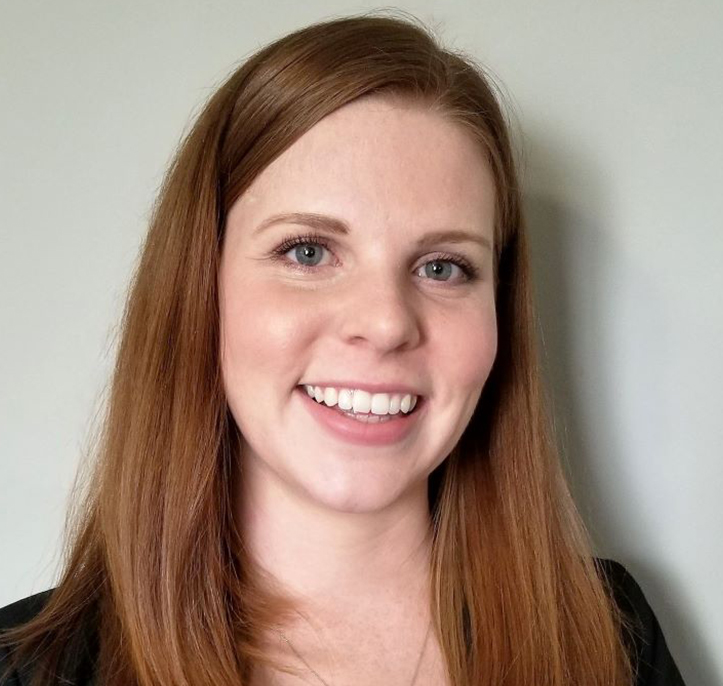
Ellen Hachborn,
Dillon Consulting Limited
Ongoing Challenges and Performance Of Pulsing For Benzene Removal In Groundwater
- Bio |
- Abstract
- | Presentation
Ellen Hachborn
Ellen is an environmental engineer (P.Eng.) and geoscientist (P.Geo.) at Dillon Consulting Limited. She has a B.Sc. (Geological Engineering) from Queen’s University and an M.Eng. (Water Resources Engineering) from the University of Guelph. Her diverse background in hydrology, hydrogeology, and water resources engineering has provided her with unique skills. Ellen has managed and contributed to a diverse range of projects across Ontario for a variety of public and private sector clients. She has provided contaminant assessment and remediation services for various media and a wide range of contaminants including PFAS. Her experience also include excess soil management, Phase One and Two Environmental Site Assessments (ESAs); Records of Site Condition (RSCs), technical advisory services for infrastructure and transit projects, and environmental permitting and compliance for industrial clients.
Ongoing Challenges and Performance Of Pulsing For Benzene Removal In Groundwater
In 2013, Dillon was retained by an oil and gas company to investigate the source of benzene release as identified in local drainage ditches, adjacent to a refinery, in an area known as the Third Party Pipeline ROW. The site is approximately two hectares in size, and is traversed by over 50 subsurface and aboveground utilities and pipelines. An Indigenous Community neighbours the site to the south and east. The community has been engaged and consulted as a stakeholder since the inception of the project.
Site investigations began in 2013, and were complicated by the density of utilities within the ROW. Following the development of a conceptual site model, a remedial options evaluation was completed and further developed in a Remedial Action Plan (RAP). The remedial area was divided into two boundary stages; Stage 1 and Stage 2. The RAP is comprised of a groundwater extraction and treatments system (GETS) with a geosynthetic clay liner (GCL) cap over each of the boundary stage areas.
Construction began in the Fall of 2015 and has since been completed. A permanent GETS and Environmental Compliance Approval (ECA) were approved by the Ministry of Environment, Conservation and Parks (MECP) in 2020. Ongoing groundwater monitoring and GETS assessment continues to be conducted monthly and quarterly by Dillon.
The GETS has lowered the groundwater elevations within the remedial stage boundary areas. To date, benzene concentrations in groundwater samples have been generally declining within the Stage 1 area. However, it is thought that benzene mass remains within the unsaturated zone above the depressed water table. To mobilize the remaining unsaturated zone benzene mass and remove it, a pulsing plan was proposed to systemically raise the groundwater levels within the Stage 1 area. Pulsing would require changing the operational levels of the GETS to increase groundwater elevations, while protecting the GCL and downgradient ditches. Pulsing commenced in 2020 and is an ongoing process with in Stage 1 area.
This presentation will discuss the ongoing challenges and performance to date of the pulsing plan including site hydrogeology, operations, site constraints, and the protection of infrastructure and sensitive receptors.
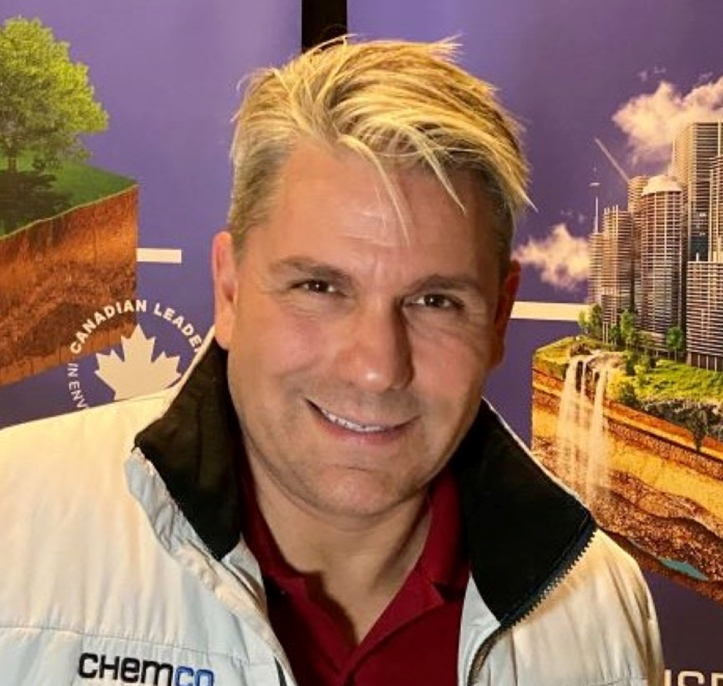
Jean Paré,
Chemco inc.
In Situ Biogeochemical Process for the Treatment of Chlorinated Organics and Metals
- Bio |
- Abstract
- | Presentation
Jean Paré
Jean Pare has a degree in Chemical Engineering from Laval University. He has been involved for the last 25 years in the evaluation, development, design, and promotion of both conventional and innovative environmental technologies. As Vice President with Chemco Inc., his responsibilities include the remediation design, technico-economical analysis and technology supply for chemical oxidation and reduction, soil washing, and enhanced bioremediation. Last year, he worked with over 400 sites applying his expertise to various types of organic and inorganic contaminants in soil and groundwater. He is also involved with many environmental organizations such as CLRA, CBN, ESAA, BCEIA and Reseau-Environnement where he is an active technical committee member and regular technical speaker.
In Situ Biogeochemical Process for the Treatment of Chlorinated Organics and Metals
Background
For over two decades, biotic (enhanced reductive dechlorination; ERD) and abiotic (in situ chemical reduction; ISCR) processes have been applied to degrade chlorinated volatile organic compounds (CVOCs) in situ. Recently, biogeochemical reduction (BGCR), a process which combines biological and chemical processes, has been combined with ERD and ISCR to provide an additional mechanism to more aggressively degrade CVOCs and to sequester metals.
During ERD and ISCR, highly reducing conditions are generated which are favorable to the reduction of ferric iron (Fe3+) to ferrous (Fe2+) and sulfate (SO4) to sulfide (S- ). If present, the ferrous and sulfide rapidly combine to produce iron-sulfide minerals such as mackinawite (FeS), and pyrite (FeS2). These biologically generated minerals have been demonstrated to abiotically degrade CVOCs on contact by the β elimination pathway. This pathway minimizes the generation of toxic degradation products thereby substantially reducing the clean-up time. In addition to forming reactive minerals, the sulfide will precipitate on zero valent iron (ZVI) if present. This sulfidation of ZVI has been demonstrated to substantially enhance ZVI reactivity.
Approach
Bench tests, field pilot studies and full-scale treatment have been conducted to evaluate the effectiveness two BGCR enhancing reagents (GeoformTM Extended Release and GeoformTM Soluble) for treatment of CVOCs and sequestration of toxic metals. These reagents have been applied at sites with distinct hydrogeologic and geochemical conditions, and contaminant concentrations. Innovative analytical techniques were used to confirm the generation of the formation and characterize the type of minerals formed.
Results
The bench tests demonstrated that BGCR enhancement significantly increased the reactivity of the ISCR reagent. The field tests demonstrated that the biologically mediated establishment of highly reducing conditions resulted in the reduction of the supplied sulfate to sulfide. Analysis confirmed that the sulfide combined with the supplied ferrous resulting in the rapid generation of a combination of reactive iron sulfide minerals. The combination of these technologies resulted in the rapid destruction of CVOCs and sequestration of toxic metals.
This presentation will describe the synergistic changes in geochemical conditions which occur during BGCR enhanced ERD and ISCR. The unique methods for identifying these newly formed minerals will be described, and the results of full-scale application of BGCR enhanced ERD and ISCR for treatment of CVOCs and metals will be presented.

Charles Birchall,
Willms & Shier Environmental Lawyers LLP
PFAS in Canada: A Legal Perspective on the “Forever Chemicals” – Laws, Guidelines, and Practical Considerations
- Bio |
- Abstract
- | Presentation
Charles Birchall
Charles J. Birchall is a partner at Willms & Shier Environmental Lawyers LLP and certified as an Environmental Law Specialist by the Law Society of Ontario. Charles practices in the firm’s Ottawa office. He has over 30 years’ experience devoted exclusively to environmental law with particular expertise in contaminated land/brownfields site remediation, environmental compliance and approvals as well as environmental assessment matters.
Charles advises clients across Canada, including environmental boards and tribunals respecting environmental assessment issues raised by mining, oil and gas and energy and infrastructure projects. He also advises on Indigenous law and consultation in the mining, infrastructure and energy sectors. Charles has acted for Joint Review Panels conducting environmental assessments of oil sands projects in northern Alberta. He defends clients being investigated or prosecuted for breaches of environmental laws and orders. Charles also assists clients in managing environmental risk by providing advice on due diligence and compliance measures. He has extensive experience in preparing submissions and appearing on behalf of clients before Parliamentary Committees in the House of Commons and the Senate on proposed environmental legislation.
Charles is peer selected annually for inclusion in The Best Lawyers in Canada© for Environmental Law. He is also named annually in both the International Who’s Who Legal: Canada for Environment and the International Who’s Who of Environmental Lawyers. He is a frequent speaker at the Canadian Bar Association and other legal and industry conferences. Charles is called to the Bar in Ontario, Nunavut and the Northwest Territories.
PFAS in Canada: A Legal Perspective on the “Forever Chemicals” – Laws, Guidelines, and Practical Considerations
Federal, provincial and territorial governments across Canada are considering how to address per- and poly-fluoroalkyl substances (PFAS). Canada and our provinces and territories now realize the potential toxicity and persistence of PFAS in the environment, but struggle to find ways to regulate and address PFAS, due to complexities involved in detecting, managing and remediating
PFAS. Charles Birchall and Anand Srivastava will:
• Provide a cross-country review of measures the federal, provincial and territorial governments are taking to address PFAS in the environment
• Consider whether and how PFAS are being addressed in environmental investigations, clean ups, and land transactions, and
• Provide considerations for environmental consultants and their clients when dealing with PFAS.

Anand Srivastava,
Willms & Shier Environmental Lawyers LLP
PFAS in Canada: A Legal Perspective on the “Forever Chemicals” – Laws, Guidelines, and Practical Considerations
- Bio |
- Abstract
- | Presentation
Anand Srivastava
Anand Srivastava is a senior associate lawyer at Willms & Shier Environmental Lawyers LLP. Anand’s practice focuses on environmental legal advice and environmental litigation. With prior education and experience in environmental toxicology, Anand assists clients to facilitate practical solutions to complex environmental legal issues. Anand works with a wide variety of clients on issues relating to environmental regulatory compliance with federal, provincial and municipal laws, contaminated sites, environmental due diligence, and exposure to environmental risks and liabilities. Anand’s objective is always to help clients understand and avoid corporate and personal environmental liabilities including civil claims, regulatory orders, and regulatory prosecutions. Anand regularly appears before the Courts and administrative tribunals. Anand prosecutes and defends environmental civil lawsuits. Similarly, Anand also defends clients against environmental regulatory prosecutions and/or appeals of regulatory orders to the Ontario Land Tribunal. Anand is called to the Bar in Ontario and Alberta.
PFAS in Canada: A Legal Perspective on the “Forever Chemicals” – Laws, Guidelines, and Practical Considerations
Federal, provincial and territorial governments across Canada are considering how to address per- and poly-fluoroalkyl substances (PFAS). Canada and our provinces and territories now realize the potential toxicity and persistence of PFAS in the environment, but struggle to find ways to regulate and address PFAS, due to complexities involved in detecting, managing and remediating
PFAS. Charles Birchall and Anand Srivastava will:
• Provide a cross-country review of measures the federal, provincial and territorial governments are taking to address PFAS in the environment
• Consider whether and how PFAS are being addressed in environmental investigations, clean ups, and land transactions, and
• Provide considerations for environmental consultants and their clients when dealing with PFAS.
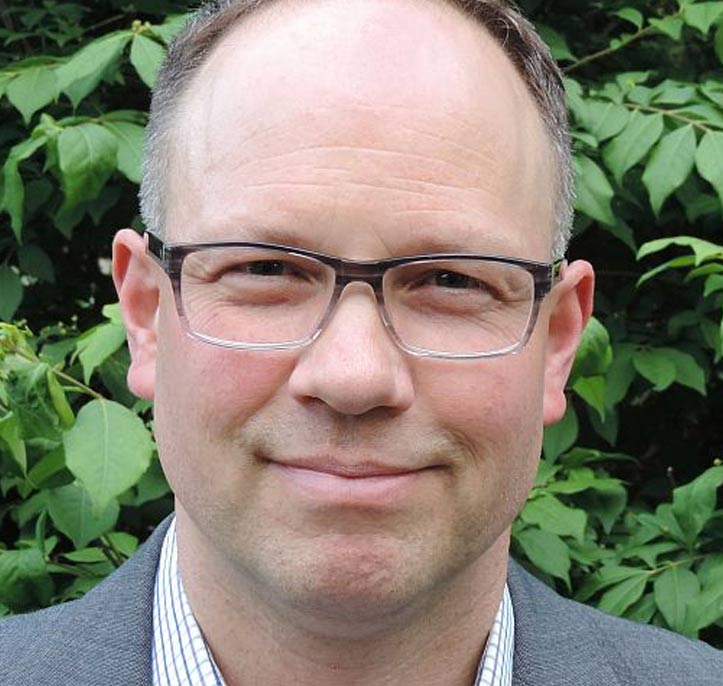
Phil Dennis,
SiREM
Anaerobic Benzene, Toluene and Xylene Biodegradation: From the lab to the field
- Bio |
- Abstract
- | Presentation
Phil Dennis
Phil Dennis has over 25 years of experience working in the fields of molecular biology, microbiology and environmental remediation with a focus on microorganisms that help to clean up our groundwater. Phil holds a Masters of Applied Science in Civil Engineering from the University of Toronto and an Honors B.Sc. in Molecular Biology and Genetics from the University of Guelph. Phil is a founding member of SiREM, an industry leader in bioaugmentation and remediation testing, where as a Senior Manager he focuses on research and development, and management of molecular genetic testing services.
Anaerobic Benzene, Toluene and Xylene Biodegradation: From the lab to the field
Benzene, Toluene, Ethylbenzene and Xylene (BTEX) are widespread groundwater pollutants. Groundwater contamination with benzene is of particular concern due to its persistence in anoxic environments and confirmed carcinogenicity. In addition to aerobic processes well known and used for BTEX bioremediation, intrinsic anaerobic processes impact the fate of BTEX as well as other hydrocarbons at petroleum contaminated sites. Anaerobic cultures have been identified and investigated, including a methanogenic benzene enrichment culture (DGG-BTM), toluene degrading culture (DGG-TTM) and a o-xylene degrading culture (DGG-XTM) developed at the University of Toronto. The microorganisms responsible for benzene, toluene and o-xylene (BTX) transformation have been identified and bioaugmentation cultures have been laboratory and field tested. In Canada, these cultures, now collectively known as DGG-PlusTM have been assessed through Environment Canada’s New Substance Notification (NSN) program and can be used at sites across the country and globally.
Results from laboratory treatability studies demonstrated enhanced benzene, toluene and oxylene biodegradation rates with DGG-PlusTM bioaugmentation and provided information to aid in field pilot-test design. One field pilot-test performed in November 2019 at a site in Saskatchewan included three injection points, two of which received up to 10 liters of the DGGBTM culture. Four additional bioaugmentation points were added to the site in September 2021. It is anticipated that benzene degradation rates will be accelerated in situ through bioaugmentation as observed in corresponding treatability studies. Additional field applications (in Ontario, and the US) where DGG-Plus were bioaugmented are also being monitored.
These first-to-field projects will establish a better understanding of dosing requirements, timeframes for obtaining results and ranges of conditions over which the cultures are effective. As with chlorinated solvents, bioaugmentation for BTEX compounds has the potential to decrease remediation time frames and increase the range of sites to which bioremediation is applicable providing a much-needed, cost-effective alternative for BTEX remediation in groundwater.
This presentation will summarize data from laboratory treatability studies and show how they aided in field design. Data from regulatory approvals and the first field applications will also be shared.
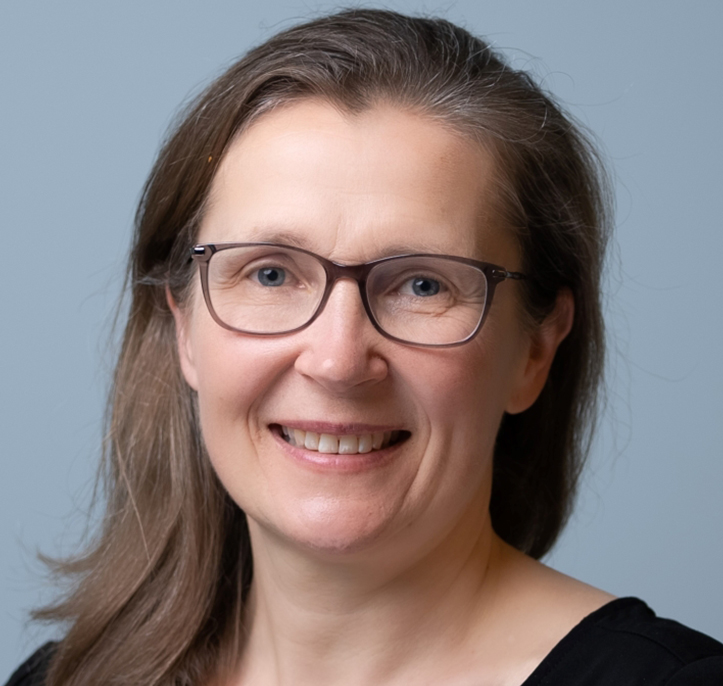
Leah Mackinnon,
Geosyntec Consultants International, Inc.
Leveraging Your CSM to Develop Successful Bedrock Remediation Approaches - Concepts & Case Studies
Leah Mackinnon
Leah MacKinnon is a Senior Principal at Geosyntec Consultants. She is a remediation engineer with over 20 years of experience in environmental consulting, investigation and remediation of sites with recalcitrant and emerging contaminants. This includes designing and implementing a wide array of remedial strategies for fractured bedrock sites.
Leveraging Your CSM to Develop Successful Bedrock Remediation Approaches - Concepts & Case Studies
Fractured bedrock sites present unique characterization and remediation challenges. Developing an accurate conceptual site model (CSM) is a critical first step in the remediation process. Some of the key aspects of CSM development at bedrock sites include identifying the rock type, delineating the source mass, characterizing the fracture network, and understanding the groundwater flow regime. For in situ remediation at bedrock sites, the treatment technology and/or amendment delivery method require careful consideration of these CSM components.
This presentation will highlight the key features of various fractured bedrock types and how these influence remedy selection, design and implementation. Several key considerations include: i) the influence of bedrock structure on migration of contaminants and amendments; ii) the role of bedrock porosity in terms of mass storage and access; iii) the potential for mobilization or altered flowpaths during remedy implementation; and iv) the advantages of specific remedial approaches in treated mass stored in the bedrock matrix.
We will present site examples and a case study that demonstrate how well-developed CSMs can be leveraged to implement successful remediation approaches at complex bedrock sites. The detailed case study is a site in Ontario where a tetrachloroethene (PCE) source area and plume in weathered shale has been investigated and treated using an anaerobic bioremediation approach. At this site, many of the considerations noted above were important considerations in designing and implementing the remedy. The potential for rebound related to back diffusion and alteration of flow paths during the remedy implementation also played a role in how the remedial program was designed and implemented.
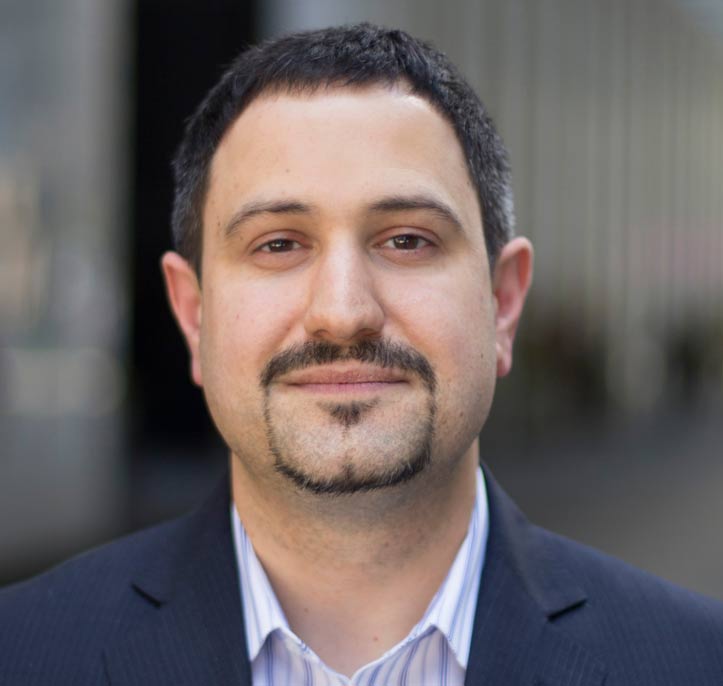
Carl Spensieri,
Berkley Canada
Case Studies – Using Environmental Insurance to Facilitate Brownfield Development
- Bio |
- Abstract
- | Presentation
Carl Spensieri
As part of the Environmental Team at Berkley Canada (a niche specialty insurance carrier), Carl focuses on delivering better outcomes for clients by using his expertise to find creative risk transfer solutions for environmental risks. Prior to underwriting, Carl was an environmental engineer working with a Toronto based environmental consulting company and then at a Canadian law firm. Carl’s areas of expertise include merger & acquisition due diligence; professional liability; environmental liability assessment and risk transfer; property transactions; and Canadian infrastructure projects. Carl holds a Masters of Applied Sciences and Engineering from the University of Toronto and a Bachelor of Laws from the University of London (UK). He is also a Professional Engineer (Ontario).
Case Studies – Using Environmental Insurance to Facilitate Brownfield Development
Across Canada, there is an increasing need to build infrastructure and residential communities on urban and industrial lands. Learn how environmental insurance can be used as a tool to reduce the liability of acquiring, building on, and repurposing environmentally challenging properties. Using case studies, attendees will learn strategies to minimize environmental liabilities and achieve better outcomes.

Matt Pourabadehei,
SNC-Lavalin
Innovative In-Situ Remediation Approach to Treat PFAS-Impacted Groundwater (Pilot Scale Design and Implementation)
- Bio |
- Abstract
- | Presentation
Matt Pourabadehei
Mr. Matt Pourabadehei is a senior environmental engineer and project manager with more than eleven years of experience in the assessment and remediation of contaminated sites. His areas of expertise are in phased environmental site assessments, remedial option analysis, and remediation of impacted soil and groundwater. Dr. Pourabadehei is a PFAS technical expert with SNC-Lavalin and has worked on site assessment and remediation projects for PFAS impacted sites in several federally owned locations in Ontario, Yukon, and British Colombia.
Innovative In-Situ Remediation Approach to Treat PFAS-Impacted Groundwater (Pilot Scale Design and Implementation)
Aqueous film forming foam (AFFF), utilized for suppressing fires involving petroleum-based products, has been stored, spilled, and used at various military and civilian airports across the country for decades. Our site is a Canadian Forces Base in Ontario, where AFFF was identified as the main source of per-and polyfluoroalkyl substances (PFAS) contamination in soil, groundwater, surface water and sediment. Due to proximity of the site to a significant water body (hydraulically downgradient of impacts), there may be a potential risk of adverse effects to human and the aquatic receptors, therefore an effective remediation approach is required to prevent PFAS-impacted groundwater from discharging to surface water.
There are currently few technically and/or economically feasible remedial options for PFASimpacted groundwater. Most current active remediation systems for PFAS utilize “pump and treatment”, an ex-situ technology. Although pump and treatment systems can be effective in some applications, most require laborious long-term, and perhaps perpetual, operation and maintenance, and they can result in non-uniform remediation. Injection of treatment materials (in a slurry form) is a more-recently developed in- situ remediation technology for PFAS, but the materials only stabilize the PFAS in the injection zone; the PFAS are not removed from the environment. The longevity of these media to stabilize PFAS is uncertain, and if media eventually desorb the PFAS, a secondary contaminant source will arise.
Given the above constraints with current remediation technologies, an innovative pilot scale insitu remediation technique was developed for the site consisting of an in-situ treatment train (ISTT) in the form of a “funnel and gate” permeable reactive barrier (PRB). The impermeable concrete cut-off funnel walls direct impacted groundwater toward the ISTT-PRB’s high permeability treatment gate in a rather conventional approach. However, for the pilot system, the gate structure was constructed with three separate chambers running simultaneously in parallel, and each chamber contains two reactive cells running simultaneously in series. Each lead cell contains modified clay and each lag cell contains bituminous granular activated carbon, thus creating treatment trains. The use of multiple types of media enables a wider range of PFAS to be captured than any single media. The lead and lag treatment cells each contain different but specific mixtures of media/sand, and each are monitored separately to enable assessment of the effectiveness of the different concentrations of media to treat the groundwater. The system was designed to permit removal and replacement of the media as they become exhausted, thus physically removing PFAS mass from the site and prolonging the life of the ISTT-PRB.
The pilot scale system’s design was completed in summer 2021 and was constructed at the site during the winter of 2022. Monitoring of the system is ongoing and is expected to continue for a year in a quarterly basis. This presentation will highlight the advantages of this remediation approach and the challenges encountered during the construction. Lessons learned from the construction within a hot spot of a PFAS- impacted soil and groundwater will be presented.
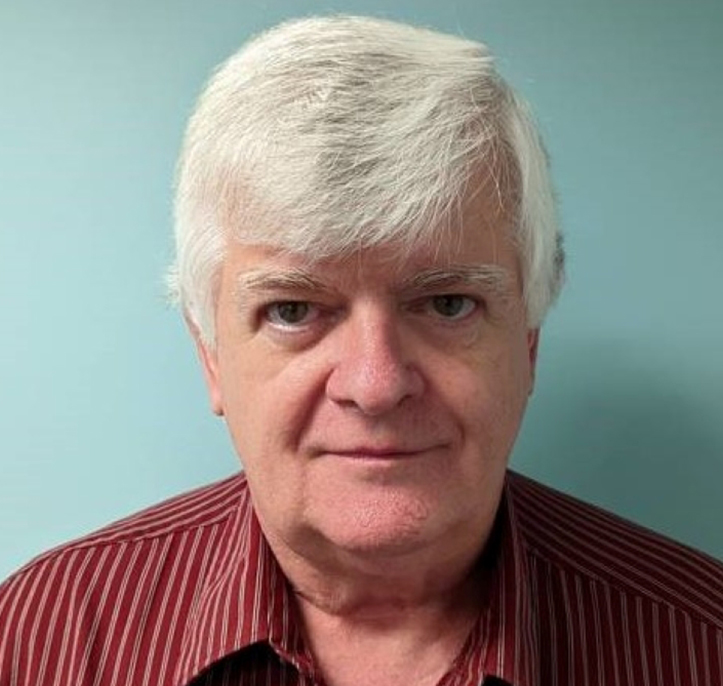
James Evans,
Geosyntec Consultants International, Inc.
Environmental Financing – What I’ve Seen in 23 Years at the Bank & Predictions for the Future
- Bio |
- Abstract
- | Presentation
James Evans
James (Jamie) Evans has worked in the environmental sector for almost 37 years. Jamie recently retired from the Royal Bank of Canada (RBC) after 23 years where he was the Senior Manager for Environmental Risk Management. Prior to this, he was an environmental consultant for 13 years at AGRA Earth and Environmental, Beak Consultants and Trow Dames and Moore. He is recognized as a North American expert on financing of contaminated real estate and Brownfield properties.
He was responsible for evaluating environmental risk issues, enterprise-wide (including Canada, the United States, the Caribbean, and Europe), associated with financial transactions. During his career at RBC, he:
• Reviewed over 17,000 transactions with a total loan value of approximately $70 billion
• Calculated CO2E emissions for RBC owned real estate
• Reviewed dozens of project finance transactions under the Equator Principles in Canada, the United States, and the Middle East
• Developed and provided environmental risk training to 100’s of account managers across RBC.
He has completed reports for RBC on Golf and the Environment, Drinking Water Quality Issues on First Nation Reserves, and the Mount Polley Tailings Dam Failure.
Environmental Financing – What I’ve Seen in 23 Years at the Bank & Predictions for the Future
Having soil or groundwater contamination on a site was once the kiss of death for getting a property financed. It did not matter what the contaminant was, where it was or how extensive it was, banks had no interest and maintained that position for years. They were oblivious to the fact that they already had 100’s of properties with contamination issues in their lending portfolio. So long as the borrower continued to make the payments on the loan, the bank was happy to be blissfully unaware. It has changed since that time and some banks will finance a site that they know is contaminated for the right client. By that, I am referring to those that manage the contamination appropriately (preferably through active remediation), they have a realistic remediation plan and they have a long term quality tenant. These type of tenants can always make the rent so that the bank never has to take the site back. Risk assessments help but they are not the panacea that some clients and consultants think they are, and they are not suitable for all sites. More than few client have gone to the expense of getting a risk assessment done to only find out the bank has no interest. Not because of the quality of the risk assessment but because the quality of the asset.
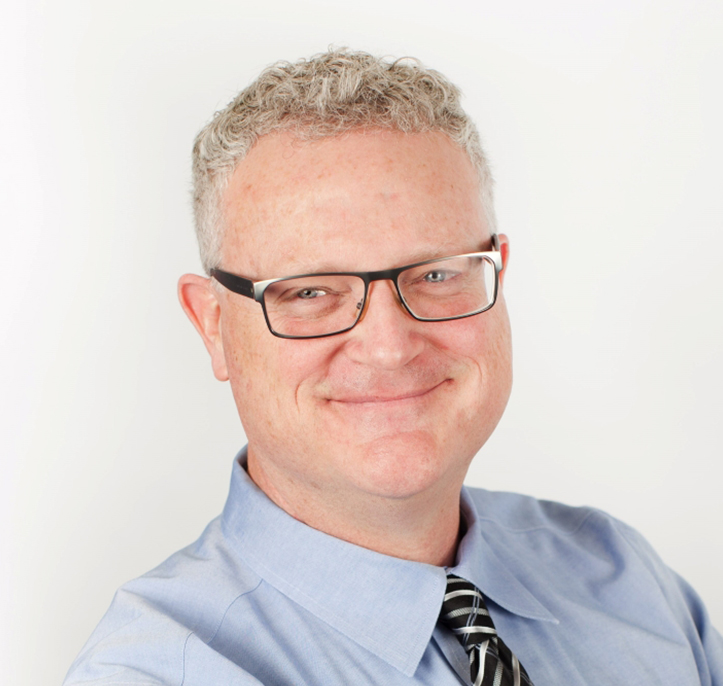
Kevin French,
Vertex Environmental
Advancing In-Situ Remediation: Three Recent Case Studies
- Bio |
- Abstract
- | Presentation
Kevin French
Kevin French is Vice President of Vertex Environmental and has over 35 years of experience and expertise in environmental engineering, specializing in site characterization and remediation. He has been involved in the design and implementation of remediation programs across Canada involving permeable reactive barriers, adsorptive and stabilization technologies, in-situ chemical oxidation and reduction, aerobic and anaerobic biodegradation, etc. in soil, groundwater and fractured bedrock for a variety of contaminants, including PFAS, petroleum hydrocarbons, chlorinated solvents, heavy metals, soil sterilants and other compounds. Kevin holds a Bachelors’ degree in Engineering from the University of Waterloo and is a Professional Engineer and a Qualified Person in Ontario.
Advancing In-Situ Remediation: Three Recent Case Studies
There have been great advances in the capabilities of in-situ remediation over the past 10 to 15 years. Long gone are the days when remedial options were limited to aerobic biodegradation for petroleum hydrocarbons (PHCs) and chemical oxidation of chlorinated solvents using potassium permanganate. Today, there are advanced technologies that can address even some of the most challenging environmental impacts. Better engineered and more persistent remedial amendments have allowed in-situ remedial solutions to be developed for sites that would historically have been limited to excavation or risk assessment.
This presentation will present some recent case studies to illustrate how some formerly imposing remedial challenges have been overcome, including:
• Treatment of metal leachate / acid rock drainage (ML/ARD) plumes using pH buffering and chemically reducing permeable reactive barriers (PRBs)
• Remediation of a chlorinated solvent plume in friable, fractured bedrock that could not be access via either direct push tooling or pressure packer injection approaches
• Overcoming high concentrations of PHCs in soil using an engineered remedial amendment that can overcome the adsorptive capacity limitations of activated carbon
Real-world case studies will be presented together with site characterization data, remedial design considerations, post-remedial monitoring data and lessons learned.